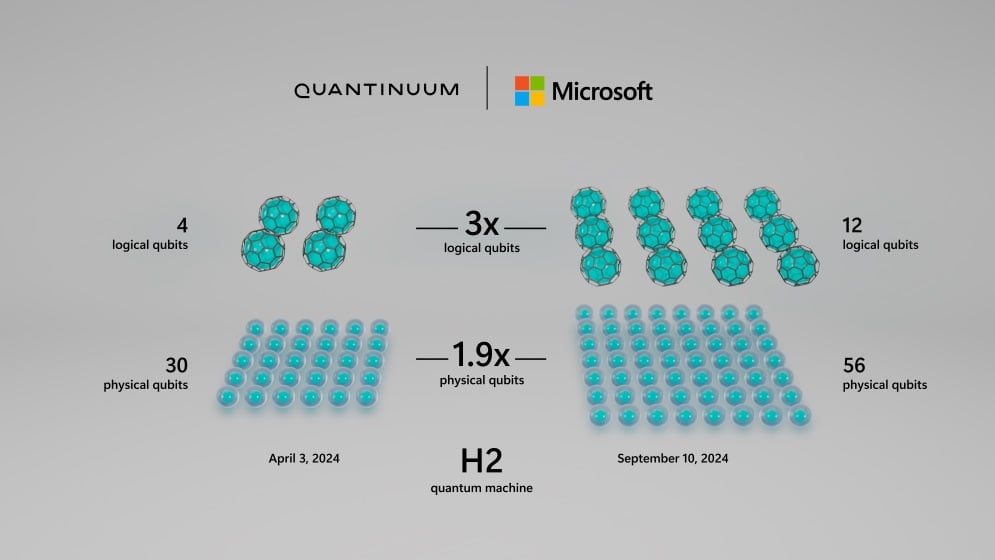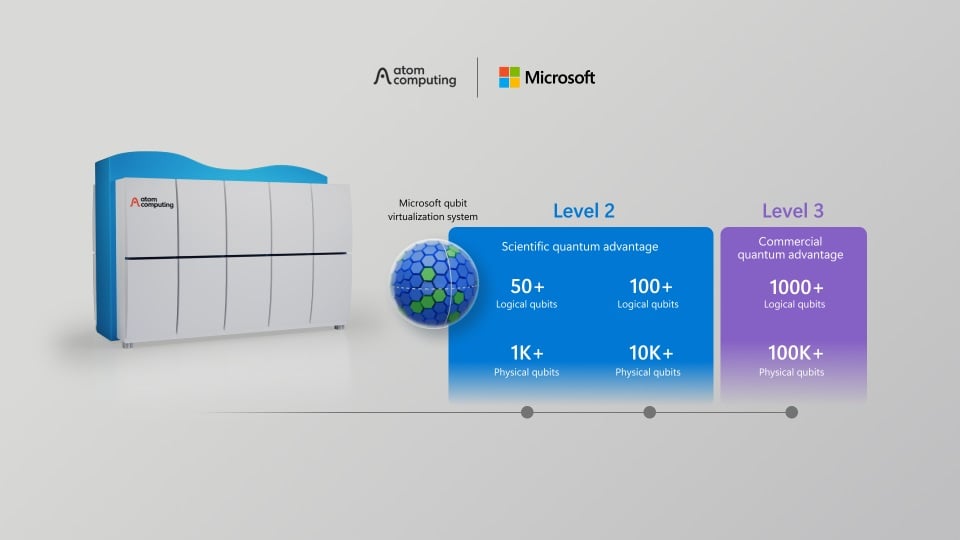
Microsoft Partners Post Quantum Milestones
In collaboration with Microsoft, quantum computing developer Quantinuum has demonstrated 12 logical qubits on the newly updated 56-qubit System Model H2 quantum computer, representing a 3× advance over the four logical qubits the companies announced in April.
“This represents the largest number of entangled logical qubits, with the highest fidelity, on record,” Microsoft said in a blog post. Logical qubits combine multiple physical qubits together to protect against noise and maintain coherence for long-running computations.

Microsoft’s improved error correction code and qubit-virtualization system has demonstrated a 22× improvement between physical and logical circuit error rates when entangled. Courtesy of Microsoft.
Microsoft also used Quantinuum’s System Model H1 quantum computer to run what the companies claim is the first ever chemistry simulation using reliable logical qubits combined with AI and high-performance computing to produce results within chemical accuracy.
Additionally, the companies completed the integration of Quantinuum’s InQuanto computational quantum chemistry software package with Microsoft’s Azure Quantum Elements, making it available to customers through private preview.

Microsoft and Atom Computing have partnered to enhance the Azure Quantum compute platform with neutral-atom hardware and tailored qubit virtualization, enabling a commercial discovery suite with continuous upgrade capabilities for additional logical qubits. Courtesy of Microsoft.
Microsoft also established a partnership with Atom Computing to integrate and advance Atom Computing’s neutral atom hardware into the Azure Quantum Compute platform. The collaboration diversifies the qubit architecture accessible through Azure Quantum.
Atom Computing is building second generation systems with more than 1200 physical qubits and plans to increase the physical qubit count tenfold with each new hardware generation. Atom’s approach combines essential capabilities for expanding quantum error correction, including large numbers of high-fidelity qubits, all-to-all qubit connectivity, long coherence times, and mid-circuit measurements with qubit reset and reuse.
Published: September 2024